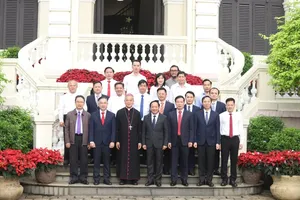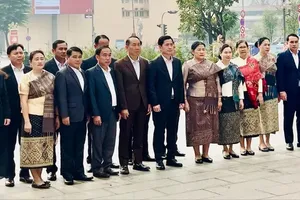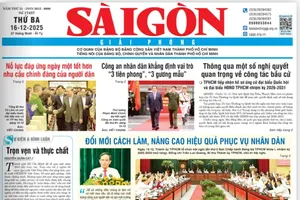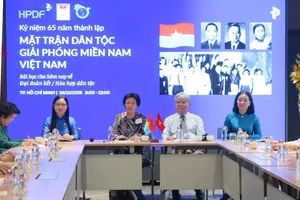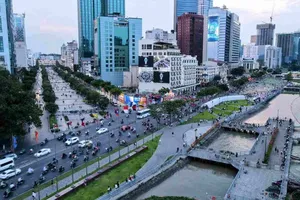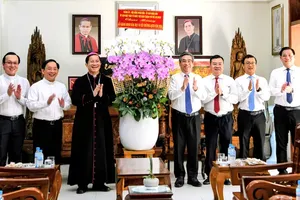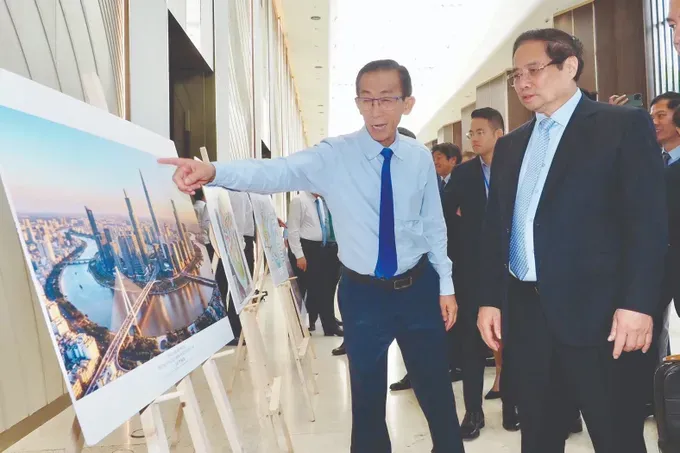
HCMC People’s Committee Chairman Nguyen Van Duoc first explained the significance of the successful 1st Party Congress of the HCMC People's Committee for the city’s development in this new period.
It provided an objective and comprehensive summary of the outstanding achievements of the past term, while also identifying limitations and lessons learned. This serves as the foundation for charting the course, defining key tasks and landmark projects, and outlining the breakthroughs for the coming period.
The congress unanimously established goals, targets, three breakthrough programs, and five key projects for the next five years. It not only reviewed a concluded period but also plotted a strategic development roadmap to 2030, with a vision extending to 2045, marking a turning point that affirms HCMC’s role as a national leader and pioneer.
The success of this congress reaffirms the solidarity within the Party Committee and radiates a spirit of innovation, dynamism, and a determination to act decisively to achieve the city’s development goals.
In response to General Secretary To Lam’s proposal to transform HCMC to a megacity, Chairman Nguyen Van Duoc mentioned practical solutions to realize this objective of:
- By 2030, turning HCMC to a civilized and modern metropolis by 2030, spearheading the nation’s industrialization and modernization, holding a prominent position in Southeast Asia, and ranking among the top 100 smart, fast-growing, and livable global cities;
- By 2045, making HCMC an international megacity on par with major world cities, a distinguished Asian hub for economics, finance, and tourism, and a globally attractive destination with a high quality of life and deep international integration.
HCMC’s mission is to pioneer and drive development for the entire country. The municipal leaders will, therefore, promote rapid, sustainable economic growth, starting with the urgent completion of integrated spatial planning. This will follow a “1 center – 3 regions – 1 special zone” model, optimizing the geo-economic strengths of a multi-center megacity along the Saigon River corridor and towards the sea.
This vision will be realized through 3 development corridors:
- a North-South corridor along the Saigon River from Tay Ninh Province to the sea,
- an Eastern corridor from Ba Ria – Vung Tau to Can Gio areas,
- an East-West corridor connecting the provinces of Dong Nai and Tay Ninh
as well as 5 strategic pillars transforming the city’s core into a high-quality hub for vital services:
- industry;
- logistics linked to seaports and airports, particularly the Cai Map-Thi Vai-Can Gio international port complex and a new International Financial Center;
- tourism and culture;
- education and health;
- science and technology.
Among them Chairman Nguyen Van Duoc stressed the key sectors to boost the status of HCMC regionally and internationally.
The five-year action plan will restructure the economy, driven by science, technology, and innovation, with the private sector as the key engine for growth. The urban space is going to be reshaped into a hyper-connected, multi-center model linked by new transport infrastructure.
Socially, the city’s goal is to become a top 100 livable city by 2030 by enhancing quality of life, from education and healthcare to environmental quality and social security. It is also committed to establishing a major International Financial Center to connect with global capital markets.
The Chairman then presented the focused solutions for the city to achieve its ambitious targets of 10-11 percent annual GRDP growth and a per capita income of $14,000-$15,000 by 2030.
HCMC is targeting breakthroughs in transport and logistics infrastructure, science and technology, and the attraction of high-quality human resources. The city will perfect its institutional framework to remove barriers related to land, credit, and administrative procedures, effectively unlocking social resources.
The governance model will be flexible and coordinated, utilizing special mechanisms to attract strategic investors. It is focusing on developing core technology sectors such as semiconductors, AI, quantum technology, aerospace, and biotechnology, while also attracting large-scale data centers.
Crucially, the city is creating a level playing field for business and building on Politburo Resolution 68 to ensure the private sector is the most important engine of growth. The goal is to foster the development of leading corporations that can compete on the regional and global stages.
These priorities are interconnected, creating a synergistic strength to elevate HCMC into a leading economic and financial hub in Southeast Asia.
As to HCMC’s next steps in implementing a “service-oriented administration”, it will first continue to perfect a two-level local government model with stronger decentralization and accountability.
The specific goals include digitizing 100 percent of administrative procedures to be available online, simplifying processes, and deploying a real-time citizen satisfaction monitoring system. The city will also intensify the use of Big Data and AI in urban management.
The entire administrative apparatus will be reviewed to eliminate overlaps, creating a streamlined and effective system. This will be linked to building a contingent of capable cadres who are daring to think, act, and take responsibility. Their performance will be evaluated based on results and, most importantly, on the satisfaction of city dwellers.
I firmly believe that with this new faith, spirit, and motivation, the entire Party Committee of the HCMC People’s Committee will unite to act with greater determination and creativity. We will seize every opportunity, overcome every challenge, and successfully achieve our goals, elevating our city to new heights.
HCMC People’s Committee Chairman Nguyen Van Duoc
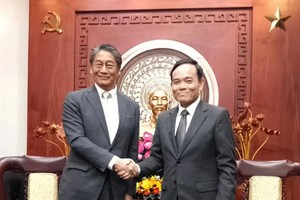






)

